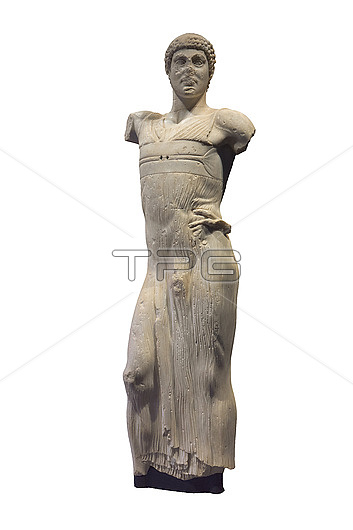
The Motya Charioteer is a very rare surviving example of an original Greek victor's statue and is believed to represent the winner of a chariot race that took place some 2, 500 years ago. He was found in 1979 amid excavations on the tiny island of Motya, a Punic settlement, on the western tip of Sicily, which was a Phoenician stronghold in ancient times and a region renowned for breeding horses. He has been identified as a charioteer because of the long tunic he is wearing, the xystis. It was a garment that covered the entire body, and was fastened with a simple belt. Two straps crossed high at the racers back preventing the fabric from 'ballooning' during the race. It is regarded by scholars as one of the finest surviving examples of a classical sculpture anywhere in the world, and is estimated to date from around 470 BC. Now on view at Museo Giuseppe Whitaker, Mozia, Sicily.
| px | px | dpi | = | cm | x | cm | = | MB |
Details
Creative#:
TOP26811770
Source:
達志影像
Authorization Type:
RM
Release Information:
須由TPG 完整授權
Model Release:
N/A
Property Release:
N/A
Right to Privacy:
No
Same folder images:

 Loading
Loading